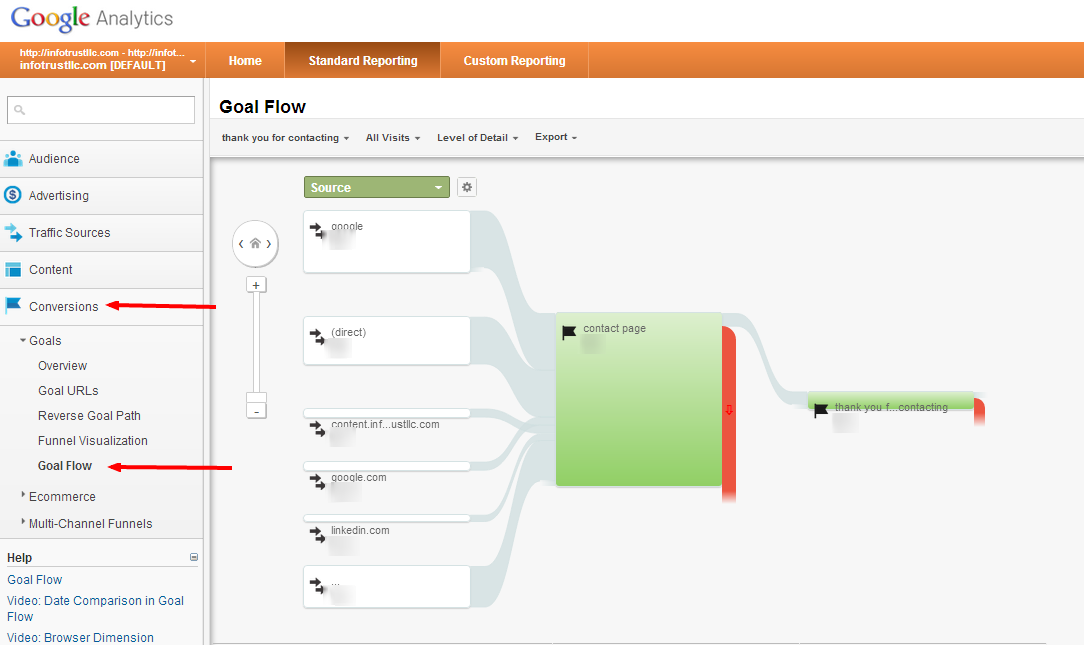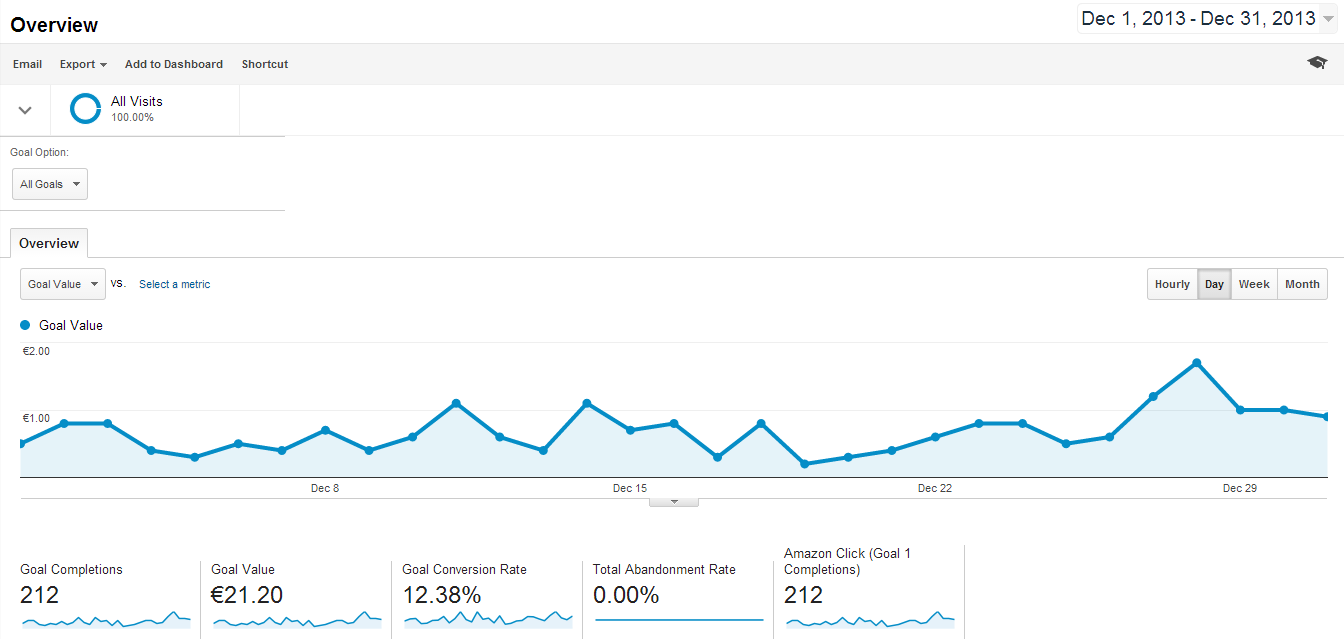Comprehensive Listing of What Data Is Google Analytics Goals Unable to Track
Comprehensive Listing of What Data Is Google Analytics Goals Unable to Track
Blog Article
Demystifying Google Analytics Limitations: Reveal What Information Goals Can not Track
In the world of digital analytics, Google Analytics stands as a powerful device that provides beneficial insights right into site performance and user actions. From the complexities of customer interaction with vibrant web content to the complexities of cross-device customer journeys, these restrictions shed light on areas that may continue to be obscured from standard analytics point of views.

Customer Interaction With Dynamic Material
Customer interaction with dynamic content plays a critical duty in comprehending customer actions on internet sites and optimizing the overall individual experience. By tracking user interactions with dynamic material, site owners can acquire useful insights right into customer involvement, choices, and behaviors - what data is google analytics goals unable to track.
Google Analytics provides various tools to track customer communications with vibrant web content, such as occasion monitoring and online pageviews. Event tracking allows you to keep track of particular user activities, like clicking a button or seeing a video, offering data on just how customers connect with vibrant aspects. Virtual pageviews can be made use of to track interactions that do not bring about a brand-new page load, providing a detailed view of user involvement with vibrant material. By evaluating this data, internet site proprietors can make enlightened choices to improve user experience and drive conversions.
Cross-Device Individual Journeys
Exactly how can modern analytics devices track the facility courses individuals take across numerous gadgets in their online trips? Cross-device customer journeys provide a substantial difficulty for monitoring and evaluating customer behavior properly. As individuals connect with apps or internet sites utilizing numerous devices such as smartphones, desktops, and tablets, it becomes vital to recognize how they move in between these systems to maximize customer experience effectively.
Google Analytics encounters constraints in tracking cross-device customer trips due to privacy worries and technical restrictions - what data is google analytics goals unable to track. While it can supply insights right into specific tools' communications, tracking a smooth individual journey across several devices remains a challenge. This limitation can cause incomplete information and fragmented customer understandings, making it difficult for organizations to develop a unified view of the consumer trip
To address this problem, organizations can make use of sophisticated analytics tools that offer cross-device monitoring capacities, enabling them to acquire a more all natural understanding of individual actions. By leveraging these tools, companies can bridge the void in tracking cross-device individual trips and maximize their digital techniques for a smooth individual experience.
Offline Conversions and Attribution
As companies navigate the obstacles of tracking cross-device individual trips, one more critical facet to take into consideration is the world of offline conversions and attribution in the world of information analytics. While Google Analytics offers useful understandings into on the internet user actions, it falls short when it involves tracking conversions that happen offline. This limitation positions a considerable obstacle for services that have both online and offline sales networks.
Offline conversions, such as purchases made in physical shops or with call centers, are important to recognizing the complete client trip. Without the capability to connect these offline conversions to particular on the internet interactions, businesses might struggle to precisely gauge the impact of their electronic advertising initiatives.
To address this space, organizations can explore alternative options such as incorporating CRM systems with online analytics tools or making use of distinct coupon codes that can be traced back to on the internet projects. By linking the gap between online and offline article source information, organizations can acquire an extra thorough understanding of their consumers' actions and improve their overall advertising strategies.
Individual Customer Recognition
In the realm of data analytics, the capability to precisely recognize individual users across various on the internet touchpoints is a critical obstacle for organizations seeking to personalize and optimize their marketing methods. While Google Analytics provides valuable insights right into user actions and interactions, it falls short in allowing index the identification of particular individuals as a result of privacy issues and technical limitations. Google Analytics uses special identifiers such as cookies to track user sessions and behavior, but these do not relate to recognizing private customers in an individual feeling.

Information From Secure Pages
Regardless of the enhancing prevalence of safe web pages on web sites, acquiring information from these encrypted sources offers a distinct difficulty for digital analytics systems like Google Analytics. Secure web pages, indicated by HTTPS in the link, secure data traded between the individual's internet browser and the web site's server to guarantee personal privacy and safety. While this security is important for protecting delicate details, it likewise postures limitations for tracking individual actions and gathering analytics data.
Google Analytics encounters obstacles in gathering thorough information from safe web pages due to the file encryption methods in position. As an outcome, particular information factors such as referral sources, keyword searches, and also some customer communications may not be completely caught when customers access a site with a protected link. This constraint can influence the accuracy and completeness of the data evaluation, resulting in spaces in comprehending customer actions and choices on protected web pages.
To browse this difficulty, electronic experts might need to discover alternative tracking methods or leverage other tools particularly made to collect understandings from safe and secure web pages. By adjusting approaches look at here now to accommodate these limitations, businesses can still derive valuable analytics despite the constraints presented by encrypted links.
Verdict
In verdict, Google Analytics has restrictions in tracking user communication with dynamic web content, cross-device customer journeys, offline conversions, private customer identification, and information from safe web pages. Regardless of its important understandings, Google Analytics may not provide a complete image of individual engagement throughout various touchpoints.
Customer interaction with vibrant content plays an essential duty in recognizing individual actions on sites and maximizing the general customer experience. By tracking individual interactions with vibrant web content, site proprietors can gain useful insights right into user interaction, choices, and behaviors.
Google Analytics uses unique identifiers such as cookies to track customer sessions and actions, but these do not correspond to determining specific customers in a personal sense.
As an outcome, particular data points such as recommendation sources, keyword searches, and also some user interactions may not be completely caught when customers access a site with a safe and secure link.In conclusion, Google Analytics has constraints in tracking individual communication with vibrant web content, cross-device customer trips, offline conversions, individual customer recognition, and information from safe and secure web pages.
Report this page